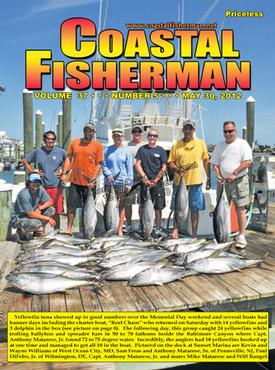


Article by Pat Schrawder
 TRANSDUCER CHOICES
TRANSDUCER CHOICES
With boats getting ready to go back in the water for the first time since the winter months, now is the time to check all your equipment, especially anything that has to be out of the water in order to fix it. This is particularly true of your transducer(s). They need to be checked to make sure they are free of debris and that paddlewheels, if included, are spinning freely. If you are installing a new system, you need to select the proper transducer.
No matter what fish finder/ sounder/ depth finder you are using, they all require some type of transducer. The transducer is the item that mounts on the transom, through the hull or sits inside the hull to transmit the signal from your fish finder. Simply put, when powered on, your fish finder applies current to the transducer which sends out a sound wave into the water. When this sound wave strikes an object more dense than the water, it reflects the signal back to the fish finder which measures the time it took for the outgoing signal to be returned in order to calculate the depth. The strength of the return signal also indicates the size, shape and density of the object that was detected.
Some transducers are single element usually transmitting on two frequencies, 50 & 200 KHz alternately. Others have multiple elements operating independently for greater sensitivity and some have elements that are tilted to look in different directions or to compensate for the angle of the hull. All transducers have at least one frequency and, when there is only one, it is important to choose the one that is best for your type of fishing. In general, the smaller the number of the frequency, the better it is for deep water while the higher (200 KHz for example) number is better for shallow water.
Most commonly used fish finders today have the combined 50/200 KHz units. All transducers send this acoustic sound wave with a particular beam width. You can think of it like a flashlight beam. The beam loses strength as it goes deeper but it also gets wider. It covers more area but with less detail.
The two most popular ways to mount a transducer is on the transom or through the hull. Regardless of which method you are using, you need to select an area where the water running across the hull is the smoothest and where the transducer is always in the water. Try to find an area that has the least dead rise angle, especially if you are going through the hull. Fortunately today there are transducers with tilted elements eliminating the need for a fairing block to “level” the transducer signal on through hull installations. Today’s transom mounted transducers have come a long way. They are easier to mount on the transom and are designed to let water flow around them with a minimum of turbulence. They are less expensive and require less time to install.
Transducers are capable of providing readings for depth, temperature and speed, but not all units do so. Make sure to find out which features you are getting. The trend lately has been to eliminate the speed aspect of the transducer. Speed wheels are notoriously known for breaking or falling off and the speed you get from them is much less informative than the speed reading you get from your GPS. The GPS speed over ground (SOG) is telling you just how fast you are making forward progress through the water. The speed from your fish finder is deceiving. You could be spinning the wheel very fast in high currents but not actually moving very quickly.
Transducers are made from three types of materials. The least expensive are high impact plastic and are generally found in transom mounted transducers as well as a few low profile through hull types. The remaining through hull units are made of bronze or, in some cases, stainless steel. This is because they must be stronger to withstand the impact of the water against them as they hang slightly below the boat.
Don’t overlook these features and differences in transducers when you select your fish finder. The greatest fish finder in the market will be a disappointment if you pair it with the wrong transducer or the right one that is improperly installed.
Pat and her husband, Larry are owners of L&L Marine Electronics on Golf Course Road in West Ocean City, MD.